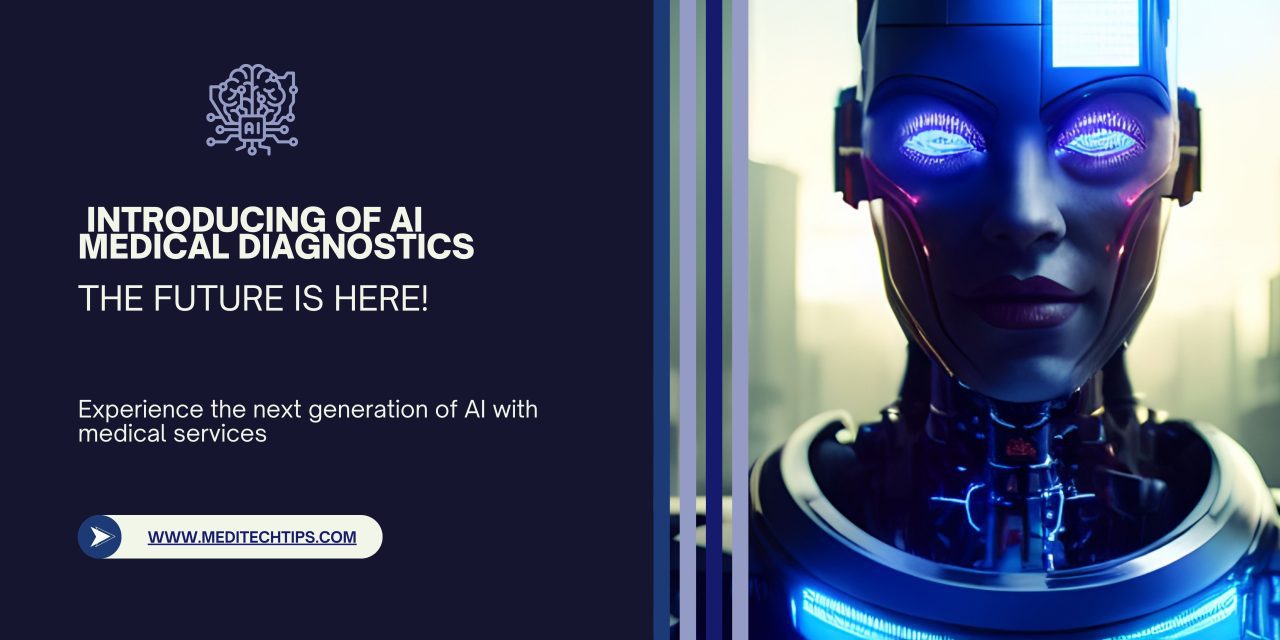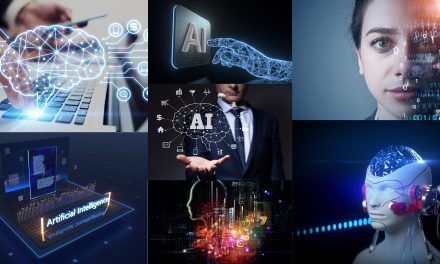Introduction of AI medical diagnostics
Ever felt like your doctor could use a superpower? That’s kind of what AI brings to the table in the world of medical diagnostics. Artificial Intelligence is no longer a sci-fi fantasy. It’s helping doctors around the globe detect diseases faster and more accurately. But how exactly does AI enhance diagnostic precision? Let’s wright about it.
Evolution of AI medical Diagnostics Techniques
Traditional vs. AI-Powered Diagnostics
In traditional diagnostics, clinicians rely on a combination of physical exams, medical history, lab results, and intuition. While effective, this method has its flaws. Human error, cognitive bias, limited access to comprehensive data, and even time constraints can lead to mistakes.
AI-powered diagnostics turn this approach on its head. Instead of starting with symptoms and trying to fit a diagnosis, AI systems analyze millions of variables from clinical notes, lab results, images, and genetic data in seconds. They offer potential diagnoses, probability scores, and even suggest additional tests to confirm or rule out a condition. It’s like having the collective knowledge of thousands of specialists packed into one machine.
Take radiology for example. In the past, radiologists would examine each scan manually, which could take minutes per image and leave room for oversight. AI tools now flag potential anomalies tiny tumors, microfractures, or hidden lesions. That the naked eye might miss. In dermatology, apps use image recognition to assess moles for signs of melanoma with accuracy rivaling seasoned dermatologists.
Key Milestones in AI Integration
The integration of AI into diagnostics didn’t happen overnight. Some key milestones include:
- 2012: Deep learning surged into the spotlight when a neural network outperformed traditional algorithms in image recognition. A foundational moment for medical imaging.
- 2016: IBM Watson was used to recommend cancer treatments, showcasing AI’s ability to sift through medical literature and patient records.
- 2018: Google’s DeepMind trained an AI to detect over 50 eye diseases with accuracy matching world-leading experts.
- 2020 onwards: Amid the COVID-19 pandemic, AI tools helped identify and predict outbreaks, analyze CT scans, and even optimize hospital resource management.
Each step forward has shown us how AI doesn’t just match human abilities. It often surpasses them, especially in pattern recognition and data analysis.
What Kind of AI Are We Talking About?
We’re mostly dealing with:
- Machine Learning (ML): Learns from data patterns.
- Deep Learning (DL): Mimics human brain structure with layers of artificial neural networks.
AI systems are trained on tons of data like millions of X-rays. So they get scarily good at recognizing patterns.
Applications of AI in Different medical Diagnostics Fields
Radiology and Medical Imaging
Radiologists now have AI tools that can flag anomalies in scans. For instance, AI can detect lung nodules on CT scans with greater speed and precision than a human might.
Pathology
In digital pathology, AI scans tissue samples for cancer cells, reducing time from days to mere hours.
Cardiology
AI can detect heart rhythm disorders, interpret ECGs, and even predict potential cardiac events before they happen.
Ophthalmology
AI systems can identify diabetic retinopathy, macular degeneration, and other eye conditions just from a retina image.
Oncology
From breast cancer to skin cancer, AI algorithms are spotting early-stage tumors that the human eye can miss.
Benefits of AI-Driven Diagnostics
Improved Accuracy and Speed
AI doesn’t just see things faster. It often sees more accurately. That’s a game-changer.
Reduced Human Error
Doctors are human. They get tired. AI? Not so much. That helps cut down mistakes, especially in high-volume hospitals.
Early Detection = Higher Survival Rates
AI’s pattern recognition can catch diseases earlier, when they’re easier (and cheaper) to treat.
Efficiency in Rural and Under-resourced Areas
AI tools on mobile devices can bring world-class diagnostics to places with no specialists around. Think rural Africa or remote parts of India.
Benefits of AI for medical Diagnostics Accuracy
Improved Detection Rates
One of the biggest wins from integrating AI into medical diagnostics is the noticeable improvement in detection rates. Whether we’re talking about spotting tiny tumors in imaging scans or identifying rare genetic markers, AI can see things humans might miss. Why? Because AI systems aren’t limited by fatigue, emotion, or a narrow experience range they operate solely on data.
Take breast cancer screening, for instance. Studies have shown that AI systems trained on thousands of mammograms can match or even exceed the accuracy of top radiologists. These algorithms catch early signs of cancer that might be overlooked during manual reviews. And when doctors and AI work together, their combined detection rates can be significantly higher than either working alone.
The same is true in dermatology. Smartphone apps powered by AI can analyze a photo of a mole and compare it to a database of skin conditions. Within seconds, it can indicate whether the mole is likely benign or warrants a visit to a dermatologist. These tools don’t just assist they empower patients and doctors with more precise data.
The beauty of AI is that it continues learning. As more data is fed into its system, the smarter and more accurate it becomes. It’s like having a junior doctor who never stops studying and never forgets a lesson.
Reduction in False Positives and Negatives
While improving detection is critical, equally important is reducing the number of false positives and false negatives. Two issues that plague traditional diagnostics. A false positive can lead to unnecessary stress, invasive procedures, and wasted resources. A false negative, on the other hand, can delay treatment for a life-threatening condition.
AI dramatically reduces both by analyzing more data points and identifying subtler patterns than humans typically can. It uses probabilistic models and cross-references multiple datasets clinical records, lab results, imaging to come to a decision.
In lung cancer screening, for example, CT scans have historically had a high rate of false positives. But with AI-enhanced interpretation, the system can distinguish between malignant and benign nodules with greater certainty. This means fewer people going through unnecessary biopsies or treatments.
In infectious disease diagnosis, such as with COVID-19, AI models can evaluate symptoms, scan results, and exposure history to provide a more accurate assessment, minimizing misdiagnoses during outbreaks.
The end result? Better decisions, fewer mistakes, and a smoother healthcare experience for patients and doctors alike.
Faster Diagnosis for Time-Sensitive Conditions
Speed is everything when it comes to certain medical emergencies heart attacks, strokes, and sepsis, to name a few. Delayed diagnosis can have catastrophic consequences, and this is where AI truly shines.
AI-driven diagnostic systems can process patient data in real time and alert clinicians to high-risk scenarios before the symptoms become visibly apparent. Take stroke detection: AI tools now analyze CT scans and immediately flag potential blockages or hemorrhages within minutes, dramatically cutting the time to treatment.
This can make the difference between a full recovery and a lifelong disability. In trauma cases, AI-integrated systems can evaluate injuries and prioritize care automatically alerting the relevant specialists, ordering the right tests, and prepping the emergency room.
Moreover, AI helps in triage situations by identifying which patients need immediate attention based on predictive analytics. In a busy ER, this level of support can quite literally save lives.
Challenges and Limitations of AI medical diagnostics
Data Quality and Bias
While AI holds immense promise, it’s only as good as the data it’s trained on. And here’s the hard truth: medical data isn’t always clean, complete, or unbiased.
Biased data leads to biased AI. If a training dataset primarily consists of one demographic say, white males aged 40–60. Then the AI may perform poorly when diagnosing conditions in women, children, or people of color. This can lead to disparities in care and further entrench existing inequalities in the healthcare system.
Additionally, poor-quality data like inconsistent entries, missing information, or outdated records can confuse AI models or lead to incorrect conclusions. Garbage in, garbage out.
That’s why improving data collection and standardization is critical. Hospitals and developers need to work hand-in-hand to ensure that AI systems are trained on diverse, high-quality, and representative datasets. Transparency in AI training and decision-making is also essential to build trust and ensure equitable outcomes.
Legal and Ethical Concerns
AI in diagnostics raises important questions around responsibility, consent, and data privacy. Who’s liable if an AI system makes a mistake? The developer? The doctor? The hospital?
There’s also the concern of patient consent. Patients may not fully understand how their data is being used or how decisions are being made by a machine. This lack of transparency can create mistrust.
Moreover, AI systems often operate as “black boxes”. They give an answer, but don’t explain how they got there. In a field where understanding rationale is crucial (especially in high-stakes decisions), this opacity can be a serious issue.
Ethical AI must be explainable, fair, and accountable. It should enhance, not override, human decision-making. Clear guidelines, legal frameworks, and regulatory oversight are urgently needed to navigate this new frontier responsibly.
Integration with Existing Systems
Implementing AI into the existing healthcare infrastructure isn’t as easy as plugging in a new tool. Many hospitals use legacy systems that aren’t compatible with modern AI software. This can create delays, increase costs, and add technical complexity.
There’s also the human factor. Not all healthcare workers are trained to use or trust AI tools. Some may see it as a threat, while others may lack the digital literacy to use it effectively. This gap can slow adoption and limit the benefits AI has to offer.
To address this, training programs are essential. Clinicians should be involved in the design and implementation of AI tools, ensuring that they are user-friendly and support real-world workflows.
Healthcare IT systems need upgrades to support real-time data sharing and integration with AI algorithms. Without this foundational work, even the most advanced AI tool may fall short in delivering its full potential
Real-World Examples and Case Studies
- Google’s DeepMind: Achieved over 94% accuracy in detecting eye diseases.
- IBM Watson: Helps oncologists identify cancer treatment options.
- Path AI: Assists pathologists by analyzing biopsy slides faster and more precisely.
How AI Assists Doctors, Not Replaces Them
Here’s the thing AI isn’t here to take your doctor’s job. It’s more like giving them an Iron Man suit. AI handles the heavy-lifting of data, while the doctor makes the final call.
Ethical Considerations and Challenges
Data Privacy and Security
Healthcare data is super sensitive. If AI systems aren’t properly secured, it’s a privacy disaster waiting to happen.
Bias in AI Models
If AI is trained on biased data, it will make biased decisions. That’s a big problem when lives are at stake.
Accountability in Misdiagnosis
If an AI system gets it wrong who’s to blame? That legal gray area needs serious attention.
Regulatory Landscape
The FDA and other international bodies are creating frameworks to evaluate and approve AI medical tools. Certifications ensure that these tools are safe and actually work.
Tips for Healthcare Providers Adopting AI
- Invest in staff training: AI tools are only as good as the people using them.
- Do your homework: Vet AI vendors for credibility, certifications, and clinical trials.
- Start small: Integrate AI into one department and scale from there.
Future Outlook of AI in Diagnostics
Emerging Trends and Innovations
Looking ahead, the evolution of AI in diagnostics is just getting started. Some emerging trends to watch include:
- Federated learning: Which allows AI systems to learn from data across multiple hospitals without compromising patient privacy.
- Explainable AI (XAI): That provides transparency into how decisions are made, increasing trust among healthcare providers.
- AI-integrated wearable tech: That can continuously monitor vitals and alert both patients and doctors to early signs of conditions like arrhythmia or sleep apnea.
- Multimodal AI: Which combines data from different sources like images, genetics, notes, and labs to offer holistic diagnostic suggestions.
The goal is not just accuracy, but also accessibility. Future AI tools will be faster, cheaper, and available on mobile devices—reaching rural clinics, remote patients, and even war zones.
Role of AI in Telemedicine and Remote Diagnosis
Telemedicine exploded during the pandemic and isn’t slowing down. AI is a natural partner in this space. From virtual triage assistants to real-time diagnostic support during video consultations, AI is enhancing the reach and quality of telehealth.
Imagine a rural doctor performing a virtual consult with an AI-powered diagnostic tool that analyzes patient symptoms, scans, and history on the spot. Or a smartphone app that helps users monitor chronic conditions like asthma or hypertension at home.
Remote diagnostic tools, supported by AI, have the power to decentralize healthcare taking expertise from top-tier hospitals and making it available anywhere with a smartphone or internet connection.
Conclusion
AI is not just changing the game in medical diagnostics. It’s rewriting the rulebook. From analyzing complex imaging scans to decoding genetic data and predicting disease outbreaks, AI is enhancing diagnostic accuracy in ways we couldn’t have imagined a decade ago.
It’s faster, smarter, and most importantly continually evolving. But as powerful as it is, AI isn’t a silver bullet. It must be used ethically, integrated thoughtfully, and guided by human judgment.
We’re at the dawn of a healthcare revolution. The synergy between doctors and data is not just improving how we diagnose disease. It’s redefining what’s possible in medicine.
FAQs of AI Medical Diagnostics
Can AI fully replace doctors in diagnostics?
No. AI is a powerful tool, but it works best when complementing human judgment. It helps detect patterns and analyze data quickly but can’t replace empathy, ethical reasoning, or clinical intuition.
Is AI reliable for critical medical decisions?
Yes, especially when trained on high-quality, diverse datasets. However, it should always be used in conjunction with human expertise and not as a standalone authority.
What are the top AI tools used in diagnostics?
Some leading tools include Google’s DeepMind for imaging, IBM Watson for oncology, Aidoc for radiology, and PathAI for pathology. Many startups are also developing niche solutions for everything from cardiac care to dermatology.
How does AI handle patient data securely?
Responsible AI systems follow strict protocols for data encryption, anonymization, and secure sharing. Federated learning also allows AI to learn from data without ever moving it off-site.
Will AI reduce healthcare costs?
In the long run, yes. By improving accuracy, reducing misdiagnoses, and streamlining workflows, AI can help lower operational costs and avoid unnecessary treatments or delays.
Learn more about this topic







I never thought about it that way—thanks for the insight!
This was exactly what I was looking for!
Well written and easy to understand. Keep it up!
I appreciate the detailed explanation, it helped a lot.
Interesting perspective—thanks for making me think.
This is so helpful. Looking forward to your next post!
Awesome content as always!
Thanks for breaking this down so clearly.
Great post! I really enjoyed your perspective on this topic.
Thanks for sharing this! Very informative and easy to understand.
This gave me a lot to think about. Appreciate the insight!
I’ve been looking for info like this—glad I found your blog.
Well-written and straight to the point. Keep up the good work!
Great read! I really enjoyed your perspective on this topic.
Great insights! I really enjoyed how you explained this topic clearly and simply.
This is so helpful. I’ve been looking for a post like this—thank you!
Well written and inspiring! Keep up the great work.
Thanks for sharing! I learned something new today.
Interesting perspective. It really made me think differently.
Love this post! Especially the part about staying consistent—so true.
Awesome tips! I’ll definitely try some of these ideas.
Great insights! This really gave me a new perspective. Thanks for sharing.
This was exactly what I was looking for. Very helpful post!